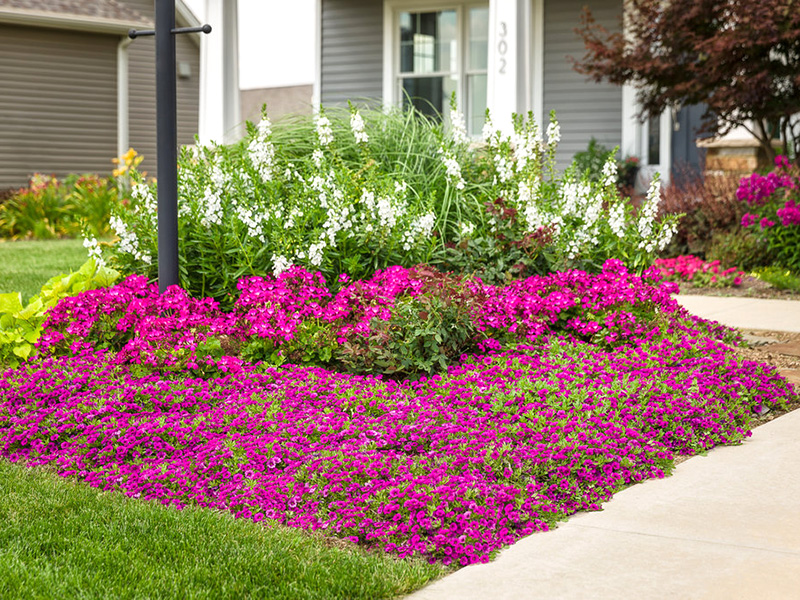Creating contrast, depth, and serenity.
Color is what gardening is all about. Each color of the rainbow, and some that aren't in the rainbow, has a role to play in gardens. Bright, hot colors create a party atmosphere while blues and purples are like a cool drink of water and white, well white glows.
In gardens, as in fashion, white is considered to be a neutral color. It works in combination with any other color or colors. When paired with bright or dark colors, a striking sense of contrast is created. When mixed with softer colors, it adds subtle contrast and additional depth to plantings. White also works to make a garden feel cool and serene.
Sometimes it's hard to stick to a specific color theme. In cases where you want to plant a wide range of colors across the property, white can be used as a unifier running through all of the different planting areas. A repeated plant or color that is used throughout the garden works to pull the disparate elements of your design into a more coherent whole. Neutral colors work best as the unifier since they work with every other color. The other neutral colors are grey, black, tan and green. These colors generally aren't found in flowers and don't have enough presence in the beds to act as a unifier. White has the needed presence to become that unifying piece of the puzzle.
Consider the conditions
Will time be spent in the garden early in the morning or later in the day when the light is lower and most colors tend to blend in with their surroundings? In these conditions, white is like a beacon in the darkness. This makes it the perfect color to use for gardens that are often experienced in morning and evening. The white garden at Sissinghurst is probably the most famous white garden in the world and proves that an all, or mostly, white garden can be quite a beautiful and serene experience.
Different tones and textures
While white just automatically works with any other color under the sun, if you are going to take the plunge and create an all-white garden there are few things you should consider.
White flowers are rarely pure white. They are often a slight blush pink, green, blue, purple, yellow or green. While these disparate white tones can work spectacularly well together, the homeowner does need to see them to make sure the tones appeal to them. As always when designing a garden, personal preferences are important and finding the white combination that fits can take time.
When thinking about white gardens, include silver foliage as part of your color palette. Silver will function in your plantings the same ways white does.
While apricot, golden orange and copper are all colors of orange, there is a huge variation in tone within that general color class. That wide differentiation in color by itself creates contrast.
Since different shades of white are comparatively similar in tone it is more important than usual to pay attention to texture when creating completely or mainly white gardens.
To keep the planting interesting it will be important to pair frilly, soft looking plants with large flowers or bold foliage. Maybe put round daisies with spikey Angelonia. These differences in size, texture and shape will keep the design interesting and allow each plant to contrast against each other.
If texture is too similar your all-white garden will have a tendency to devolve into a bit of a mess, without good distinct shape to make the different plants stand out.
Liberal use of foliage plants in a range of colors - deep green, green, chartreuse and black - is another great way to add structure and contrast. Since these colors are all neutral, they will play well together. It is also good to repeat certain plants, which will also help to tie everything together.
Gardens that are primarily white or all white can be truly magical places. If careful attention is paid to texture and balance, these gardens can be gorgeous in both low light and mid-day sun.
Learn more at provenwinners.com/learn.
Article written by Kerry Meyer for Proven Winners. All photos courtesy of Proven Winners.



